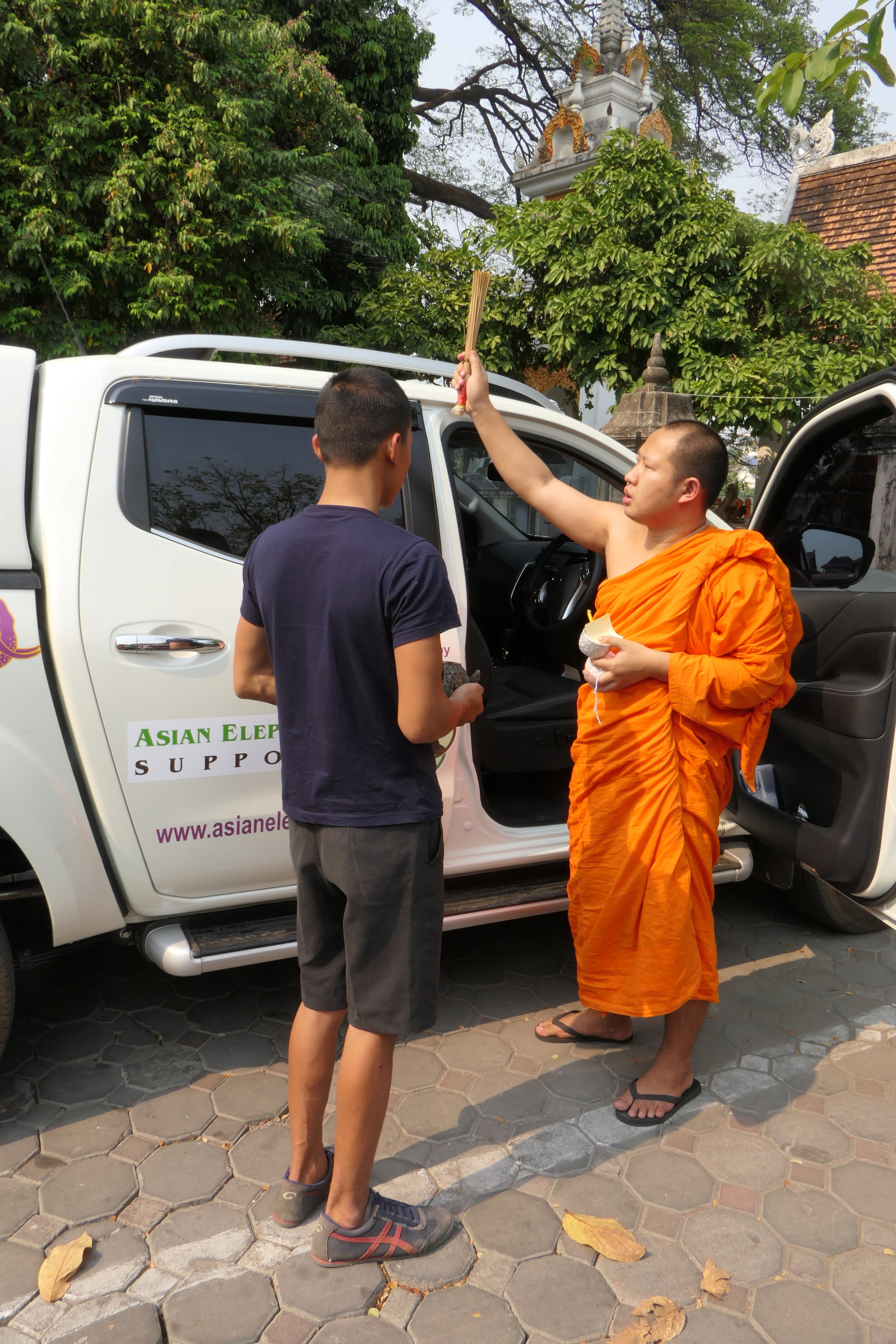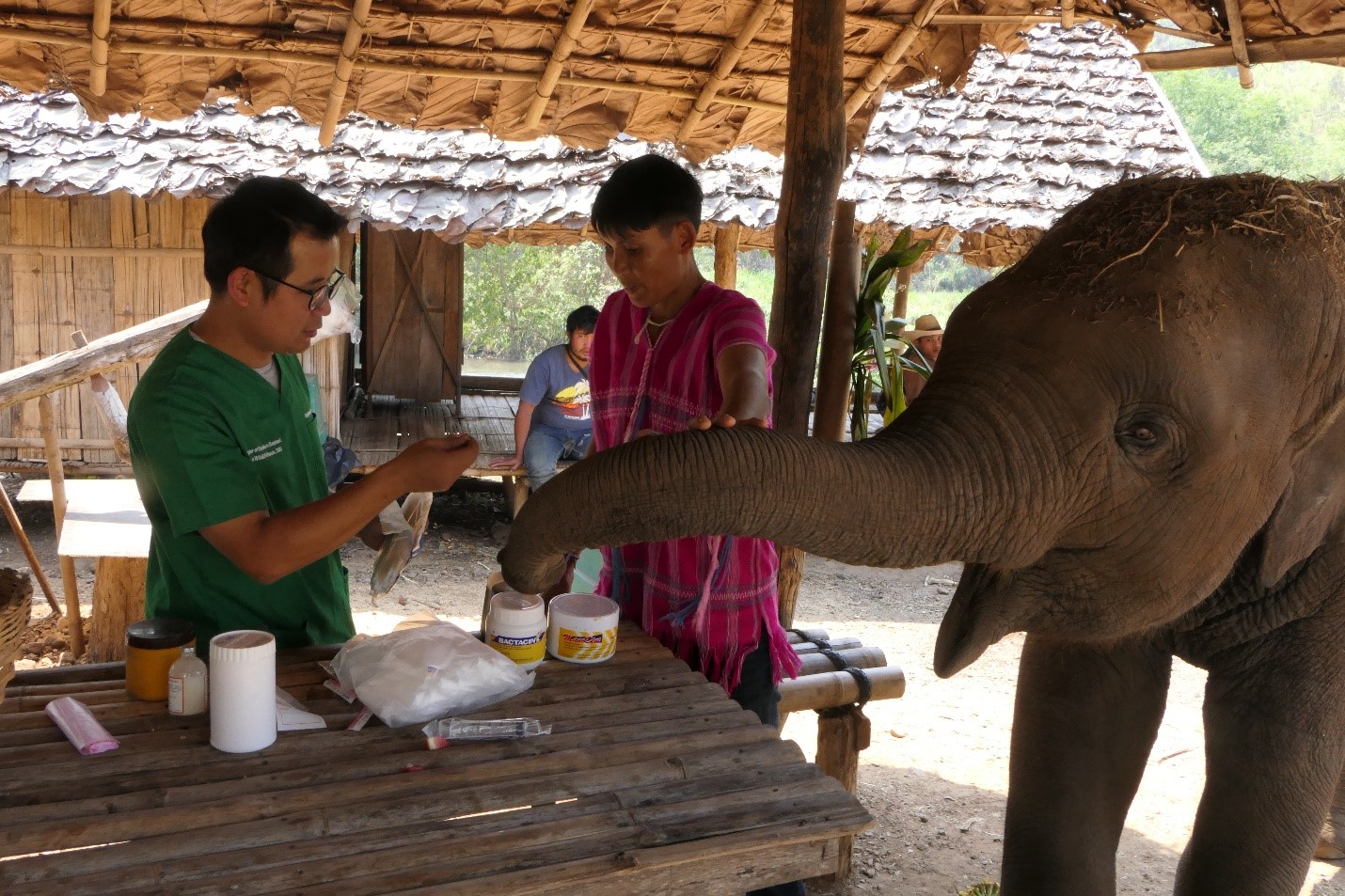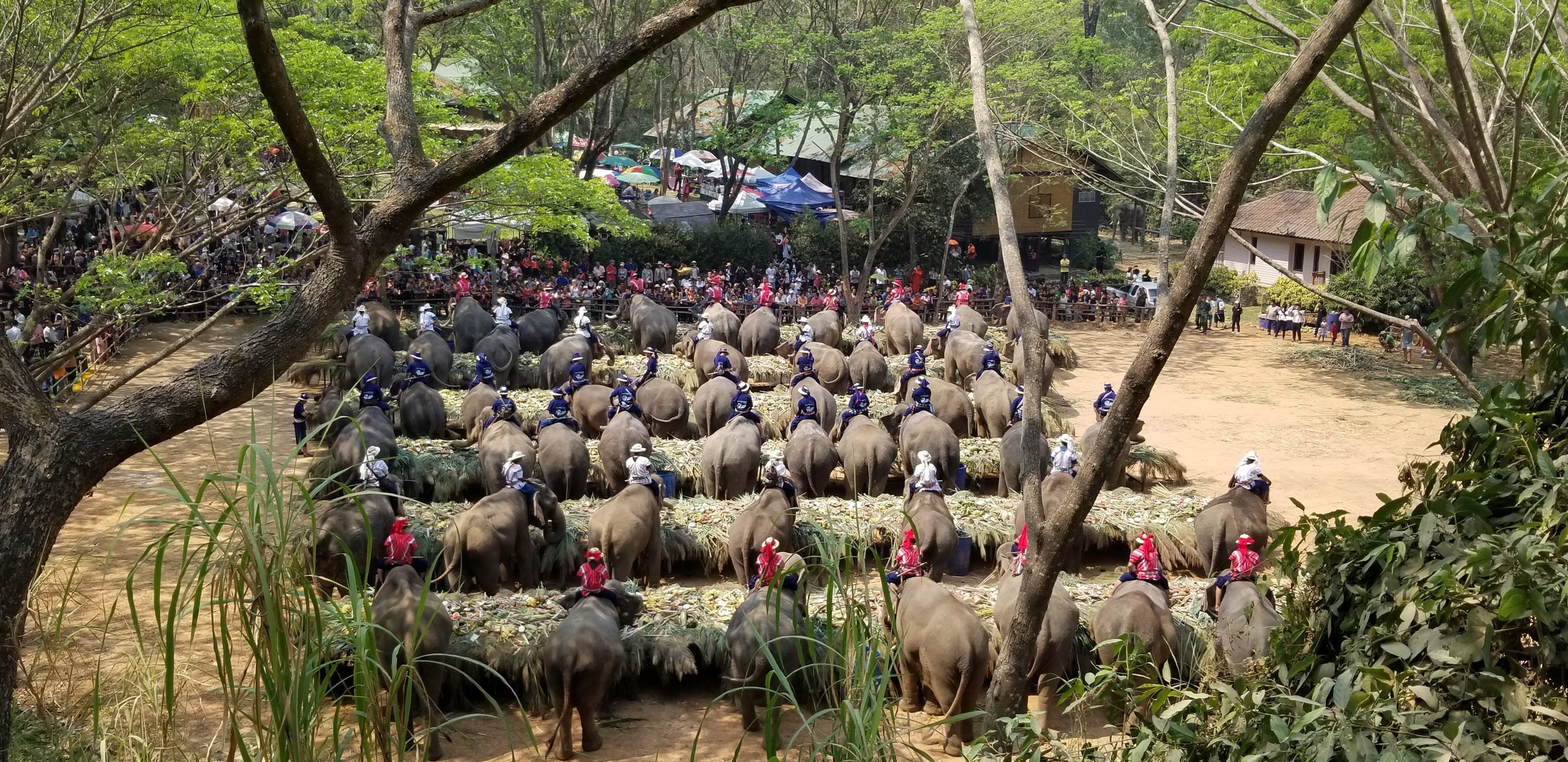From the perspective of new board member, Janet
I had two major objectives when I joined the trip to Thailand for the mobile vet dedication on Thailand Elephant Day:
To see for myself how AES funds are put to use,
To learn more about Asian elephants in one of their range countries.
Let’s just say this trip delivered on these items and more. I met recipients of AES grants: camp managers, workshop participants, the wonderful elephant vets and researchers at Chang Mai University and AES partners. Some funds are used to improve camp conditions for some captive elephants. It was thrilling to actually see the mobile vet van in use, with vets treating elephants at different camps and facilitating research data collection.
I traveled from Chang Mai to Chang Rai in the new mobile vet van purchased with AES funds. If I had to choose a highlight of the trip, this was it. I saw the countryside where the wild elephants reside, visited a number of different types of camps and watched the vets interacting with the patients and clients. I realized firsthand how remote the camps are from elephant medical facilities and experienced that the CMU van was able to handle the rough terrain and winding roads. We met camp managers, mahouts, veterinarians and respected experts in the study of Asian elephants and, yes, even an elephant chiropractor.
Throughout all these travels in the van and a very informative stay at Elephantstay (a great place to learn about the life of a mahout), I don’t think a day passed without seeing multiple elephants. From meeting the first Thai calf conceived through artificial insemination named AI, seeing a calf less than 2 weeks old and a cow almost ready to give birth, to treating scrapes, collecting blood draws and checking on a lame elephant - all were part of the job of the mobile vet. At the Friends of the Asian Elephant (FAE) elephant hospital, I even had the opportunity to see an elephant being treated for an injury from a land mine. The hospital has a lab that can produce prosthesis for wounded elephants!
There were so many other discoveries on this trip. I wish I could tell you about each and every one. Overall, I could not be more proud of the people and work enabled through the donations made to AES. It was gratifying to see the vet being able to treat remote elephants in the field. The studies and recommendations of Chiang Mai University are so important to the survival of the Asian elephant in Thailand and elsewhere.






























